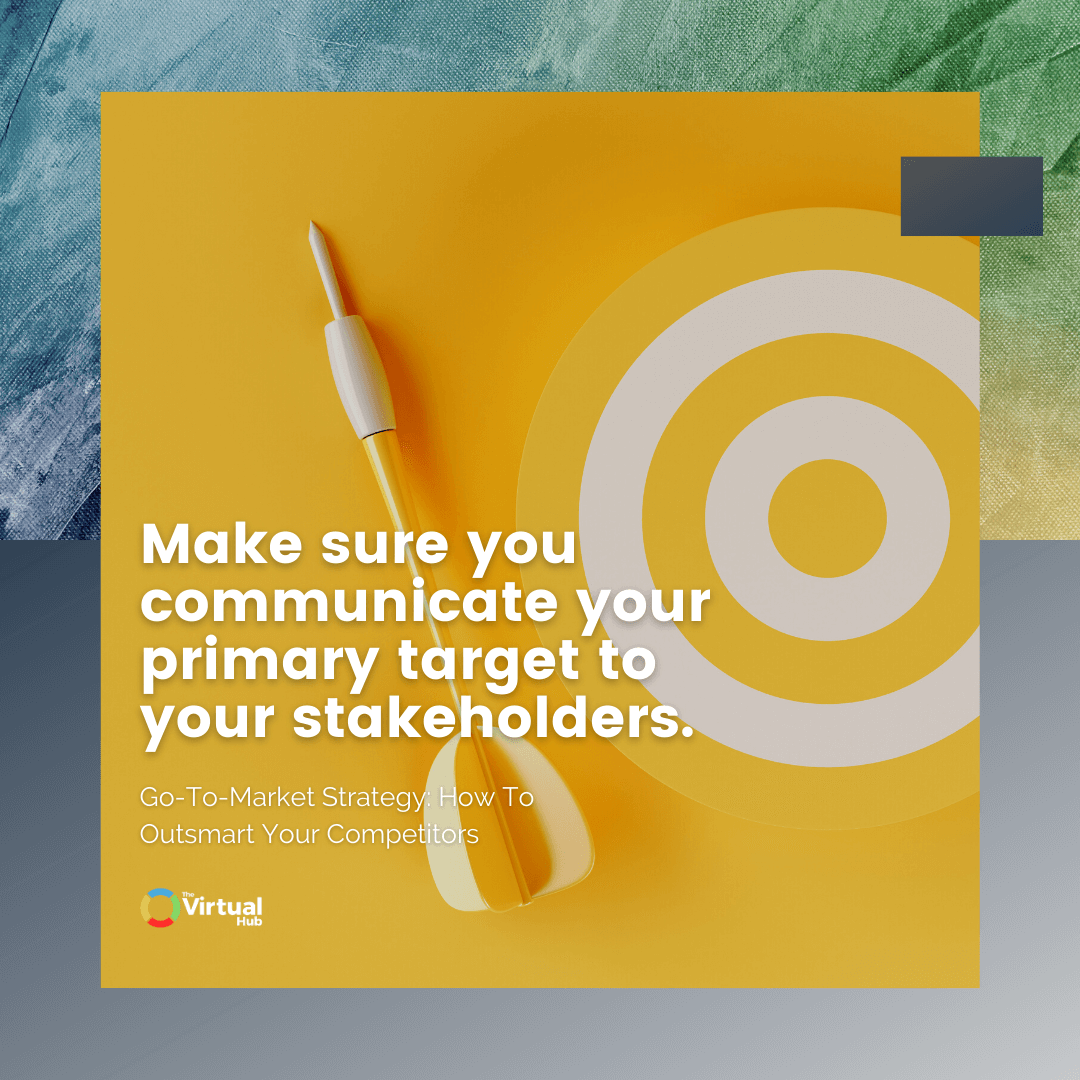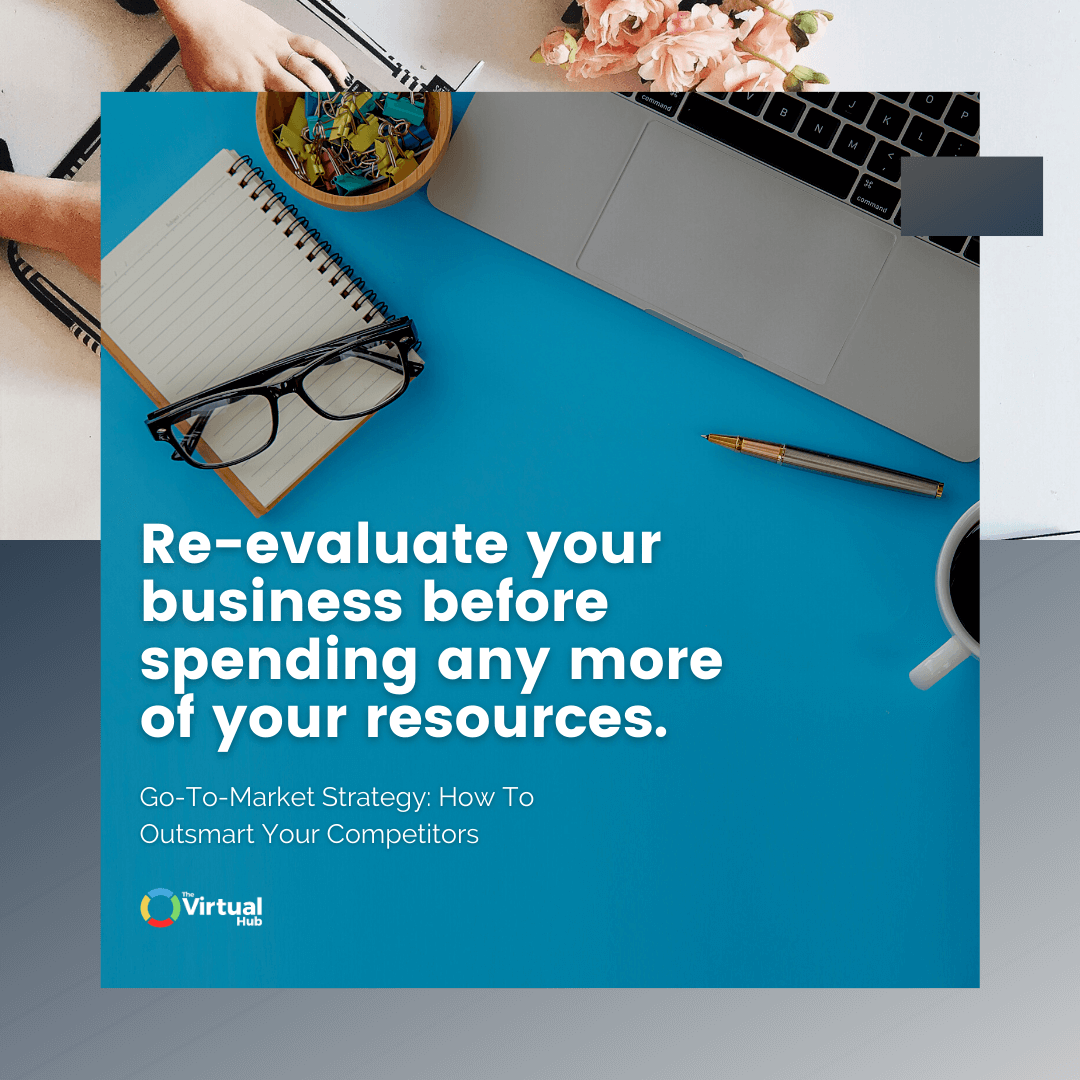These days, you need more than a great idea or product to succeed in this competitive and constantly evolving market. Taking the time to develop a go-to-market strategy can help maximize your business’s resources and help you meet your desired outcomes.
In this blog post, we'll discuss the steps in developing a successful go-to-market strategy, even when your competition is one step ahead of you. Keep reading to learn more!
RELATED: Search Engine Optimization: Why Is SEO Important For Your Business?
9 Strategies to Beat Your Competition
You can click on these links below to jump to a specific strategy:
- What Is a Go-To-Market Strategy?
- Why Use a Go-To-Market Strategy?
- When Do You Use a Go-To-Market Strategy?
- Who Needs to Know about the GTM Strategy?
- How Do You Develop an Effective GTM Strategy?
Step 1: Know Your Competition
Step 2: Identify Potential Customers
Step 3: Create a Value Matrix or a Go-To-Market Matrix
Step 4: Test Product Messaging
Step 5: Decide on Sales Strategy
Step 6: Prepare a Budget
Step 7: Retain Your Customers
Step 8: Evaluate Your Results
Step 9: Constantly Innovate
What Is a Go-To-Market Strategy?
There's often confusion between a marketing strategy or marketing plan and a go-to-market (GTM) plan. Both are important in guiding a company's marketing efforts, but they serve different purposes.
A marketing plan is a high-level overview of the entire marketing strategy for the coming year. It includes an overview of the target client, the company's positioning, key marketing messages, and planned marketing activities.
While a marketing plan sets the overall direction for the year, a GTM plan helps to ensure that these goals are achieved.
A go-to-market plan is more specific, outlining the specific tactics that'll be used to execute the marketing strategy. It includes detailed information on product launches, campaigns, promotions, and channels. It also defines how you'll reach your target market and what unique value proposition you'll offer them. In other words, it's your game plan for taking your existing product or service to market, and making sure it resonates with your potential customer.
A well-designed go-to-market strategy must be closely aligned with the company's business model. If they're not aligned, the company will likely to fail to achieve its desired results.
Why Use a Go-To-Market Strategy?
Most startups begin with great ideas, services, or products, but more than half of new businesses fold before they make it to five years. Many factors contribute to business closure, but having a go-to-market strategy may be able to predict (or even prevent) this.
The information you gain from GTM plans can help you course-correct your business decisions to ensure that you’re maximizing all of your resources. A good GTM strategy will give you the information you need to determine the feasibility and sustainability of your new product.

Remember, you may clearly understand the value of your product or service, but this doesn’t automatically translate to your target customers. A GTM plan will help make sure that you're getting your message across effectively to the right people.
When Do You Use a Go-To-Market Strategy?
Go-to-market strategies are usually associated with new businesses. But it’s also useful for established businesses! Here are a few business scenarios that would benefit from a well-planned GTM strategy:
- starting a new business
- launching new products or services
- expanding the company (ex: opening a new store branch)
- engaging new markets or different target audience
- strengthening customer engagement with existing products or services
- relaunching a service, product, brand, or company
A GTM strategy is useful when a company needs to identify the specific steps they need to take to get their products or services to specific markets.
Who Needs to Know about the GTM Strategy?

Within an organization, a GTM strategy is useful for decision-makers. Specifically, it’s also helpful if your sales manager, marketing team, and sales teams understand the product or service’s GTM strategy. That way, they’ll understand why certain tactics are employed over others.
It’s also very useful for business owners who are looking for investors. Your GTM strategy will show your investors that you have a well-thought-out action plan.
"Keep in mind that a buyer’s persona goes beyond basic demographics, you have to flesh out these personas and imagine what their day-to-day lives are like."
How Do You Develop an Effective GTM Strategy?
Your go-to-market strategy must have the following core components:
Step 1: Know Your Competition
The first step to outsmarting your competition is understanding who they are and what they're all about. What products or services do they offer? How are they positioning themselves in the market? What are their strengths and weaknesses?
Once you have a good understanding of your competition, you can begin to develop a plan to position yourself in a way that'll allow you to outflank them.
Step 2: Identify Potential Customers
Depending on your product, you'll need to describe the buying center or buyer personas. For most organizations, you need to sell your product to a group of people before you land the sale.
The buying center refers to the group of people who are involved in the buying process.
Studies show that there are six roles you need to identify in most buying centers:
- Initiator: whoever begins the buying process
- Buyer: whoever controls the budget
- User: people who'll use the product
- Influencer: people who persuade others of the product’s value
- Decider or Approver: people who greenlight the purchase
- Gatekeeper: whoever has the power to stop or delay the sales process
Some of these roles overlap and, in some organizations, a single employee can take on multiple roles. The roles can also vary in different organizations, so it helps if you list down the job positions that you expect will make up the buying centers.

On the other hand, you’ll need to outline a buyer’s persona if you’re selling your products to individuals rather than organizations.
What is a buyer persona? This is a profile that describes your ideal customers. It describes what their lives are like, what they value, their common challenges, and how they make decisions.
Keep in mind that a buyer’s persona goes beyond basic demographics. You have to flesh out these personas and imagine what their day-to-day lives are like.
Tips:
- Once you’ve defined your target market, consider its size. Will you have enough prospective customers to turn a profit? You’ll have to adjust your strategies if your analysis shows that your product is only appealing to a small group of people.
- If your research shows that multiple groups of people would be interested in your product, try to prioritize a few instead of going for all of them at once. That way, the product messaging can be more specific.
- Make sure you communicate your primary target to your stakeholders.
"To be competitive, businesses need to be present at every stage of the buyer’s journey."
Step 3: Create a Value Matrix or a Go-To-Market Matrix
Now that you know who your end customer is, you need to dig a little deeper into their makeup. A value matrix can help you do this.
What is a value matrix? This is a breakdown of your customer’s pain points and how your product/service addresses these problems.

In understanding your buyer’s journey, you need to take note of the three stages of a customer's buying process:
- Awareness: customers become aware of their problems or needs
- Consideration: customers look into all of the alternatives
- Decision: customers choose which product to buy
To be competitive, you need to be present at every stage of the buyer’s journey. You also need to take your customers through these three stages:
- Attract: attract customers with the appropriate content marketing or ads
- Engage: present the value of the product in a meaningful way
- Delight: close the deal
Your go-to-market strategy should explain how you intend on attracting, engaging, and delighting your customers.
Once you have a value matrix, you can develop your product message. This communicates the value of your product and shows your new customers how the product solves their pain points.
Overall, your value matrix should help you articulate the purpose of your product.
The complexity of your value matrix will depend on the number of persons or roles you’ve identified in the previous step.

Step 4: Test Product Messaging
Once you have a product message, it’s important to test it. You'll need to consider two factors when testing your message:
- the message
- the advertising channel
If possible, draft and test multiple versions of your product message. That way, you can see which version impacts your target markets the most.
After testing multiple messages, you can start testing different channels to see which one yields the most engagement.
For example, if your target clients spend a lot of time on social media, it might be worth testing your ad on different marketing platforms, such as Facebook, Instagram, or Twitter. Make sure to optimize your ads based on the results of these initial tests.
Other specific marketing activities that you may undertake as part of your go-to-market strategy are:
- paid advertising
- content marketing (eBooks, blog posts, landing page, whitepapers)
- PR campaigns/press outreach
- lead generation campaigns (webinars, eCourses)
- events sponsorships/trade shows
- partner/affiliate programs
Step 5: Decide on Sales Strategy

Your sales strategy will outline how you intend on delivering your product to the new market. Most businesses choose from the following common sales strategies:
- Field Sales: a sales organization closes large deals
- Channel Model: another agency or store sells the product
Tips:
- You don’t have to commit to one strategy. Depending on your market, you may have to use a combination of two or more strategies.
- If you’re a startup, take your time building and training your sales team. You can continue to invest in your sales team as your business grows.

Step 6: Prepare a Budget
Once you have your GTM strategy in place, you need to know how much it'll cost to execute this plan. This'll help determine whether or not you're working with a cost-effective model. Otherwise, if it eats too much of your profit margin, you may have to adjust your strategy.

The information you gain from the previous steps will allow you to answer the following questions about your product or service:
- What is the product-market fit? Does it solve any pain point or offer any benefits? What are these problems/benefits?
- Who is the target audience? To whom do the problems or benefits relate?
- What is your pricing strategy? What is your target audiences’ spending capacity? Are they willing to pay for it?
- What’s the competition like? Is there anyone else selling a similar product or similar solutions? Is there still a demand for the product?
- What’s the best way to distribute your product? What mediums will you use?
If the answers to these questions aren’t favorable, then you can re-evaluate your business before spending any more of your resources. But if your GTM shows that your business could have a competitive advantage, then you can move forward with more confidence!
Pro Tip: Your budget should include the resources you need for the maintenance of your products or services even after you’ve launched them.
Step 7: Retain Your Customers
After all your hard work, the last thing you want is for customers to leave.
You need to have a plan in place to keep your customers satisfied and ensure that they remain loyal to your brand.
There are a few things you can do to keep your customers:
- Constantly communicate with them--let them know about new products, services, or deals.
- Get feedback from them and take their suggestions into consideration. You can gather user feedback through surveys, interviews, focus groups, or beta testing (if appropriate).
- Offer loyalty programs, free service, or rewards.
- Provide excellent customer service.
Make sure that your customer retention strategy is aligned with your GTM strategy. This way, you can avoid any conflicts down the line.
Step 8: Evaluate Your Results

After your product launch, it’s important to monitor your progress and see how well your GTM strategy is working. You need to set up KPIs (key performance indicators) to track your success.
Some examples of KPIs you can use are:
- revenue
- customer acquisition cost
- customer churn rate
- net promoter score
These KPIs will help you determine whether or not your GTM strategy is effective. If it’s not, then you can make the necessary adjustments.
It’s also important to keep in mind that your GTM strategy might not work immediately. It might take some time for it to start bearing fruit. So, don’t give up too soon! Evaluate your results after a few months and go from there.
Step 9: Constantly Innovate
To stay ahead of the competition, it's important to continuously innovate and improve upon what you're already doing well. This means keeping up with industry trends and making sure you're offering the latest and greatest products or services available. It also means constantly looking for ways to improve your process so that you can deliver an even better product or service to your target market.
Final Thoughts
A go-to-market strategy is an essential part of any business plan. By outlining your GTM, you can develop a clear and concise plan for taking your product or service to market. This'll help ensure that you're making the best use of your resources and that you have a higher chance of success!
Up Next:
